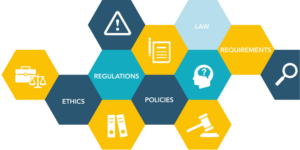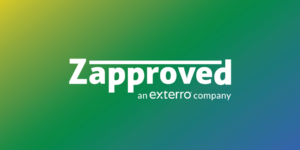From the pandemic to social-justice movements to political drama, 2020 impacted our lives in some big ways. Even the slow-moving legal profession saw its share of upheaval and change. It wasn’t so much the litigation workflow itself that changed, but rather the overall environment and macro-trends that legal teams are dealing with. Here are a few takeaways from the past year, followed by a bit of crystal-ball gazing at what lies ahead in 2021.

IT pressures, remote work, and expanding remits
More than anything, the pandemic has strained corporate legal teams’ relationship with IT. Even in the best of times, IT had a long list of priorities to serve the needs of the larger business. The pandemic just added to IT’s to-do list. Meanwhile, legal teams have been under pressure to do more with less, leading to even greater need to adopt and roll out in-house ediscovery and legal hold tools.
The new model of remote work affected nearly every profession and clearly is not going away. For legal teams, this shift exposed the limitations of on-premise software and made the case for the cloud more strongly than ever. Even before the pandemic, 95% of corporate teams said they were doing more discovery internally. Gartner has forecast that 70% of companies will have in-house ediscovery capabilities by 2023, up from 20% last year. That growth is being powered by the innovation, elasticity, and security of cloud tools. Moreover, the cloud gives corporate legal teams more flexibility in working with outside counsel. It doesn’t matter if the person doing a document review works for the company or vendor. It’s about who can do it most efficiently using the same tool.
As more teams bring more work in-house, the legal tools they adopt are increasingly being used for other parts of the business. In particular, they are commonly being used for attestations and privacy-related requests. For example, a lot of attestations might normally be handled by HR, but your legal hold tool might be able to process them more easily and cheaply. And the process of handling a privacy-related request sure looks a lot like that used in ediscovery. By dint of being experts at using these tools, legal teams are taking on more internal work outside their traditional scopes.
Legal trends for 2021
So what will ediscovery look like in 2021? After the craziness of last year, the old saying feels truer than ever: predictions are hard, especially about the future! But it seems safe to point to three major trends: growing teams, growing data sources, and growing sensitivity to security.
- Growing teams. Yes, corporate legal teams have generally been overworked and underfunded. But as they develop more in-house ediscovery capabilities and expand their purview into other parts of the business, they’ll find the opportunity to grow.
- Growing data sources and the need to collect from them. Remote work brought with it an explosion of new collaboration tools such as Slack, Microsoft Teams, and Zoom. This is creating reams of data in a variety of new formats, stored in a variety of places, and governed by a variety of settings and policies.
- Growing sensitivity to security concerns. This is part and parcel of our new world of remote work and the growing popularity of the cloud. Recent headlines underscore the need to stay vigilant, from those building the platforms to end users.
To hear more on these topics, check out a recent chat I had with Ari Kaplan, and consider signing up for our upcoming webinar, Preparing for the Corporate Ediscovery Realities of 2021, on January 13. You’ll hear from an expert panel of ediscovery professionals from T-Mobile, Cardinal Health, and Travelers Insurance as they address the aftermath of 2020 and look ahead to future technology inflection points.




